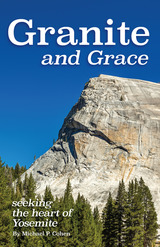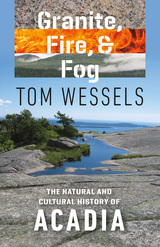3 books about Granite

Granite
Susan Butcher and David Monson
University of Alaska Press, 2007
Susan Butcher was a four-time champion of the Iditarod Trail sled dog race. Granite was her greatest lead dog, but he didn’t start that way. He was a shy, scraggly pup that the others pushed around, but Susan saw his potential. Together they worked until he became leader of the team.
While they were training for the Iditarod, Granite became deathly ill. The veterinarians said he would never be strong enough to run the race. Granite refused to accept this, and slowly he started to recover. By the time of the race he was strong enough to start, but Susan wondered if he could finish the entire thousand-mile race. Confidently Granite guided the team into the lead of the race, when suddenly they were caught in a raging Arctic blizzard. Now Susan and the whole team depended on Granite to get them through the storm. He had to call on all his inner strength and courage to save them—if he could.
While they were training for the Iditarod, Granite became deathly ill. The veterinarians said he would never be strong enough to run the race. Granite refused to accept this, and slowly he started to recover. By the time of the race he was strong enough to start, but Susan wondered if he could finish the entire thousand-mile race. Confidently Granite guided the team into the lead of the race, when suddenly they were caught in a raging Arctic blizzard. Now Susan and the whole team depended on Granite to get them through the storm. He had to call on all his inner strength and courage to save them—if he could.
[more]

Granite and Grace
Seeking the Heart of Yosemite
Michael P. Cohen
University of Nevada Press, 2019
In Granite and Grace Michael Cohen reflects on a lifetime of climbing, walking, and pondering the granite in Yosemite National Park at Tuolumne Meadows. This high-country region of Yosemite is dominated by a young, beautifully glaciated geological formation known as the Tuolumne Intrusive Suite. It does not include familiar Yosemite icons like Half Dome, yet geologists describe this granitic realm at over 8,000 feet as “an iconic American landscape.”
Drawing together the humanistic and scientific significance of the wild landscapes he traverses, Michael uncovers relationships between people and places and meaning and substance, rendering this text part memoir—but also considerably more. On-the-rock encounters by hand and foot open up a dialogue between the heart of a philosopher and the mind of a geologist. Michael adds a literary softness to this hard landscape, blending excursions with exposition and literature with science. It is through his graceful representations that the geological becomes metaphorical, while the science turns mythological.
This high country, where in 1889 John Muir and Robert Underwood Johnson planned what would become Yosemite National Park, is significant for cultural as well as natural reasons. Discoursing on everything from Camus’s “Myths of Sisyphus” to the poems of Gary Snyder, Michael adds depth to an already splendorous landscape. Premier early geologists, such as François Matthes, shaped the language of Yosemite’s landscape. Even though Yosemite has changed over half a century, the rock has not. As Michael explores the beauty and grace of his familiar towering vistas, he demonstrates why, of the many aspects of the world to which one might get attached, the most secure is granite.
Drawing together the humanistic and scientific significance of the wild landscapes he traverses, Michael uncovers relationships between people and places and meaning and substance, rendering this text part memoir—but also considerably more. On-the-rock encounters by hand and foot open up a dialogue between the heart of a philosopher and the mind of a geologist. Michael adds a literary softness to this hard landscape, blending excursions with exposition and literature with science. It is through his graceful representations that the geological becomes metaphorical, while the science turns mythological.
This high country, where in 1889 John Muir and Robert Underwood Johnson planned what would become Yosemite National Park, is significant for cultural as well as natural reasons. Discoursing on everything from Camus’s “Myths of Sisyphus” to the poems of Gary Snyder, Michael adds depth to an already splendorous landscape. Premier early geologists, such as François Matthes, shaped the language of Yosemite’s landscape. Even though Yosemite has changed over half a century, the rock has not. As Michael explores the beauty and grace of his familiar towering vistas, he demonstrates why, of the many aspects of the world to which one might get attached, the most secure is granite.
[more]

Granite, Fire, and Fog
The Natural and Cultural History of Acadia
Tom Wessels
University Press of New England, 2017
Acadia National Park, on Maine’s Mount Desert Island, is among the most popular national parks in the United States. From the road, visitors can experience magnificent vistas of summit and sea, but on a more intimate scale, equally compelling views abound along Acadia’s hiking trails. Tom Wessels, an ecologist, naturalist, and avid hiker, attributes the park’s popularity—and its unusual beauty—to the unique way in which earth, air, fire, and water—in the form of glacially scoured granite, winter winds, fire, and ocean fog—have converged to create a landscape that can be found nowhere else. In this beautifully illustrated book, Wessels invites readers to investigate the remarkable natural history of Mount Desert Island, along with the unique cultural story it gave rise to. This account of nature, terrain, and human interaction with the landscape will delight those who like to hike these bald summits, ride along the carriage roads, or explore the island’s rugged shoreline. Wessels concludes with a guided tour of one of his favorite hikes, a ten-mile loop that will acquaint the reader with the diverse ecosystems described throughout his book.
[more]
READERS
Browse our collection.
PUBLISHERS
See BiblioVault's publisher services.
STUDENT SERVICES
Files for college accessibility offices.
UChicago Accessibility Resources
home | accessibility | search | about | contact us
BiblioVault ® 2001 - 2024
The University of Chicago Press









